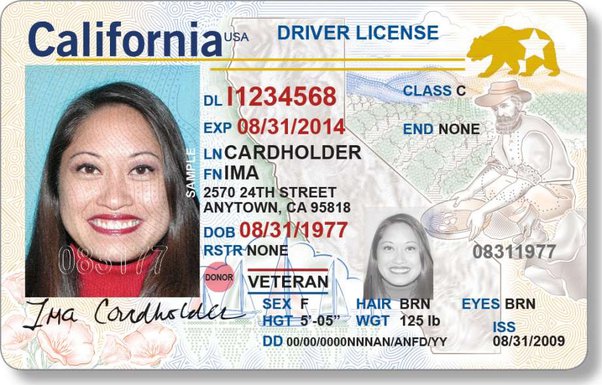Understanding ISS on Driver’s Licenses
When examining a driver’s license, you may come across various abbreviations and codes that provide important information about the document. One such abbreviation is “ISS,” which stands for “Issue Date.” Understanding what this means and its significance can help clarify the validity and history of your driver’s license. This article will delve into the meaning of ISS on a driver’s license, its implications, and related information to provide a comprehensive understanding.
What Does ISS Mean?
The term “ISS” on a driver’s license refers to the date when the license was issued. This date is crucial as it indicates when the driver was granted their license and serves as a reference point for various legal and administrative purposes.
Importance of the Issue Date
The issue date is significant for several reasons:
- License Validity: It helps determine the age of the license, which is essential for identifying whether it is still valid or if it needs to be renewed.
- Renewal Periods: Many states require drivers to renew their licenses every few years. The ISS date provides a starting point for calculating when the next renewal is due.
- Legal Documentation: The issue date can be important for legal matters, such as traffic violations or insurance claims, where the validity of the driver’s license may be questioned.
How to Find the ISS Date on Your Driver’s License
The ISS date is typically located on the front of the driver’s license. Depending on the state, it may be labeled as “ISS,” “Issue Date,” or simply displayed in a designated area. Here’s a general guide on where to find it:
| State/Region | Location of ISS Date |
|---|---|
| California | Near the bottom of the front side |
| Florida | On the front, often near the expiration date |
| New York | On the front, typically under the photo |
| Texas | Near the bottom right corner |
Variations in ISS Representation
Different states may represent the ISS date in various formats. For example, some states may use a specific code or abbreviation, while others may clearly label it as “Issue Date.” It’s essential to familiarize yourself with your state’s driver’s license layout to locate the ISS date easily.
Relationship Between ISS and Expiration Date
The ISS date is often accompanied by an expiration date (EXP) on the driver’s license. The expiration date indicates when the license will no longer be valid, while the ISS date shows when it was issued. Understanding the relationship between these two dates is crucial for maintaining a valid driver’s license. Here’s a comparison:
| Term | Description |
|---|---|
| ISS (Issue Date) | The date the driver’s license was issued. |
| EXP (Expiration Date) | The date the driver’s license will expire and needs to be renewed. |
Common Questions About ISS on Driver’s Licenses
1. What happens if my license is expired?
If your driver’s license is expired, you may be unable to legally drive until it is renewed. Driving with an expired license can result in fines, penalties, or other legal consequences.
2. How often do I need to renew my driver’s license?
Renewal periods vary by state. Most states require renewal every 4 to 8 years. Check your state’s Department of Motor Vehicles (DMV) for specific requirements.
3. Can I drive with an expired license if I have a valid ISS date?
No, having a valid ISS date does not allow you to drive legally if your license has expired. You must renew your license to regain driving privileges.
4. What should I do if I can’t find the ISS date on my license?
If you cannot find the ISS date, check your state’s DMV website or contact them for assistance. They can provide guidance on where to find this information.
5. Does the ISS date affect my insurance rates?
While the ISS date itself may not directly impact your insurance rates, having a valid, up-to-date driver’s license is essential for maintaining good standing with your insurance provider.
How to Renew Your Driver’s License
Renewing your driver’s license is a straightforward process, but it can vary by state. Here’s a general step-by-step guide:
- Check Eligibility: Ensure your license is eligible for renewal. Most states allow renewals online, by mail, or in person.
- Gather Required Documents: You may need identification, proof of residency, and payment for renewal fees.
- Complete the Application: Fill out the renewal application form, which can often be found on your state’s DMV website.
- Submit Your Application: Submit your application online, by mail, or in person at your local DMV office.
- Receive Your New License: Once processed, you will receive your new driver’s license, which will have a new ISS date.
Conclusion
Understanding the meaning of ISS on a driver’s license is essential for managing your driving privileges and ensuring compliance with state regulations. The ISS date serves as a critical reference point for license validity and renewal periods. By familiarizing yourself with this information, you can maintain a valid driver’s license and avoid potential legal issues.For more information about driver’s licenses and related topics, you can visit the Wikipedia page on driver’s licenses.
FAQ Section
| Question | Answer |
|---|---|
| What does ISS mean on a driver’s license? | ISS stands for “Issue Date,” indicating when the license was issued. |
| How do I find the ISS date on my license? | The ISS date is usually located on the front of the driver’s license, often labeled as “ISS” or “Issue Date.” |
| What is the relationship between ISS and EXP? | ISS is the issue date, while EXP is the expiration date. Both are important for license validity. |
| What should I do if my license is expired? | You cannot legally drive with an expired license; you must renew it to regain driving privileges. |
| How often do I need to renew my license? | Renewal periods vary by state, typically every 4 to 8 years. |



